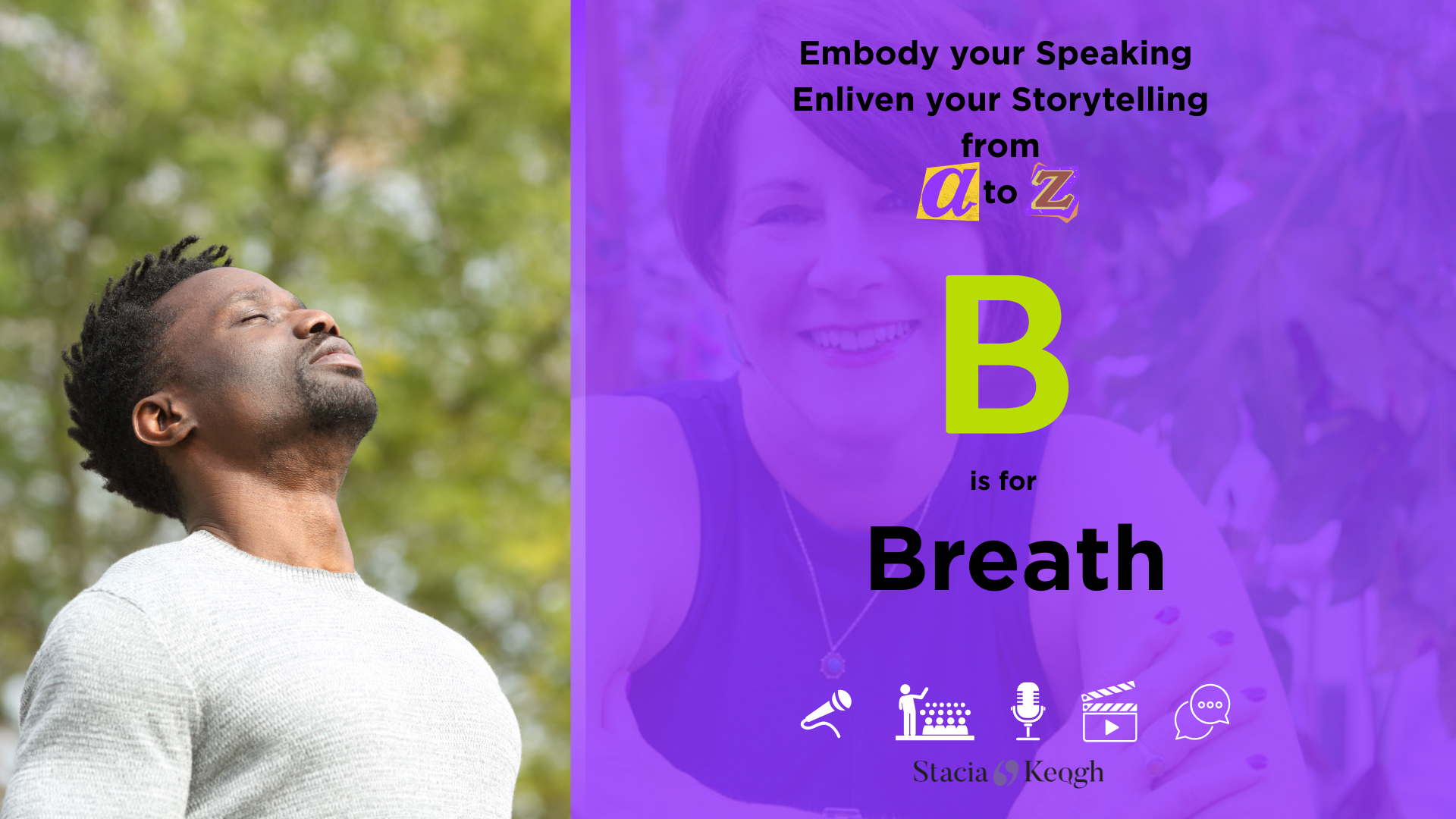Embody your Speaking Enliven your Storytelling: A=Answers
We’ve all been there.Standing in front of a group whether it’s a boardroom, a networking event, or...
By: Stacia Keogh on 15-Aug-2025 15:40:00

Here’s the thing, your breath is free, always with you, and entirely in your control.
Yet so many speakers forget to use it.
Instead, they grip their scripts, tighten their shoulders, and unconsciously hold their breath as if bracing for impact.
The result? A tense voice, a frozen body, and a story that never fully lands.
It sounds absurd, we all breathe, right? But under pressure, most people do the opposite of what the body needs. They hold stale air in, waiting to speak, waiting to “perform,” saving the breath for when they think they’ll need it most.
In reality, the magic doesn’t come from saving air, it comes from releasing it.
Here’s the simplest, most powerful reset you have as a speaker: expel all that old air.
Let it go.
Then, allow the in-breath to arrive naturally because it always will.
You can practise this anywhere:
In the car before a meeting – sigh out, unclench the jaw, and let the shoulders drop.
Backstage before stepping onstage – breathe out, smile, and feel the ground beneath your feet.
During a tense moment – sigh audibly, and notice the instant shift in your state.
This “sigh of relief” signals to your body that it’s safe, relaxed, and ready to be fully present.
Breath is the bridge between body and voice.
When you’re holding it, you’re also holding back your authenticity, your connection, and your spontaneity.
When you let it flow, you create space in yourself, in your story, and in your audience for your message to truly land.
So next time you’re stuck, nervous, or overthinking?
Breathe out.
Because a relaxed, available speaker tells a richer, more alive story. And that’s the kind of story people remember.
We’ve all been there.Standing in front of a group whether it’s a boardroom, a networking event, or...
Because we’re social creatures by nature, we’re naturally drawn to stories we can...
Finding My Voice is a behind-the-scenes listen to how people like you and me find their voice and...